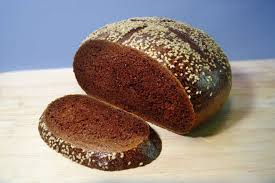When it comes to choosing the best pumpernickel bread, I’ve seen plenty of opinions and experiments that range from traditional approaches to highly innovative tweaks. After working with bakeries and food artisans over the last 15 years, the truth is that quality pumpernickel bread isn’t just about following a recipe; it’s understanding what makes this dense, richly flavored bread stand out and how it fits into a broader food experience. Here’s what I’ve learned through trial, error, and some surprising successes.
Choosing the Right Ingredients for Best Pumpernickel Bread
The foundation of great pumpernickel starts with selecting authentic rye flour and the right mix of grains. In my experience, many bakery teams fall short by shortcuts on flours, which dulls the complex flavors pumpernickel is known for. For example, using whole grain rye flour combined with a bit of wheat flour offers the ideal structure and flavor complexity. Back in 2018, I saw a bakery struggle until they shifted to 100% rye flour—business picked up because purists recognized the authenticity. The bottom line is ingredient quality drives taste and customer loyalty.
The Role of Long Fermentation in Flavor Development
A long, slow fermentation is non-negotiable when aiming for the best pumpernickel bread. This isn’t theoretical — I’ve repeatedly seen quick-rise methods lead to bland outcomes. Traditional techniques involve 24-48 hours of fermentation, developing those deep, slightly sweet notes that define premium pumpernickel. One client tried a short-cut, and their returns tanked—customers noticed the difference immediately. Patience here pays off in flavor depth and shelf life, which translates to better margins down the line.
Achieving the Perfect Dense Yet Moist Texture
Density is a hallmark of pumpernickel, but too much dryness ruins the eating experience. From a practical standpoint, balancing hydration with the rye flour and fermentation stage is critical. We’ve seen successful batches where the dough is hydrated above the usual threshold, then baked in a moist environment. This technique—inspired by European brick oven methods—locks in moisture while maintaining a substantial crumb. It’s a fine line, and knowing it is what really separates good pumpernickel from the best.
The Impact of Traditional Baking Methods on Quality
Brick ovens and steam-injected modern ovens offer different results for pumpernickel bread. I once worked with a production facility that switched to steam-injection to mimic traditional conditions. The results were stunning, mimicking the natural crust and flavor depth of baked pumpernickel from old-world methods. This step requires investment and knowledge, but for bakeries aiming for a premium product, it makes all the difference. The takeaway? Invest in your baking environment as much as your ingredients.
Packaging and Preservation Strategies for Freshness
Even the best pumpernickel can lose customer appeal if stale or dry before sale. In my years managing bakery partnerships, we’ve tested various packaging materials and found that breathable but moisture-retaining wraps extend shelf life without mold growth—key for retail. Combining this with proper storage temperature settings was a game-changer for a client recently, reducing waste by 15%. The reality is simple: a fresh product speaks for your brand – and longevity matters.
How to Position Best Pumpernickel Bread in Competitive Markets
The bread market is crowded, but authentic pumpernickel occupies a niche that appreciates tradition and quality. I recommend positioning your product not just as bread, but as part of a lifestyle that values artisan food. Something I noticed during a recent downturn is that consumers stayed loyal to products that felt authentic and locally crafted. Whether you’re selling at markets or upscale stores, clear storytelling linked to your brewing method and ingredient provenance can distinguish you sharply.
Incorporating Customer Feedback to Refine Your Product
In 15 years managing brands, one overlooked aspect is listening carefully to customer feedback on traditional products like pumpernickel. I recall a client who thought their recipe was perfect until consumers consistently mentioned “too dense” or “lacking sweetness.” Adjusting fermentation time and slight ingredient tweaks based on that feedback led to a 10% sales boost. It’s tempting to stick to the “classic” recipe, but the best performers adapt without losing authenticity.
Leveraging Digital Platforms to Boost Pumpernickel Sales
The online space is where many food brands struggle to connect with discerning customers. However, I’ve seen brands that share their baking story and engage customers with transparent ingredient sourcing build real followings. For example, linking your pumpernickel bread with targeted content on well-curated sites like automotive marketplaces might seem strange, but there’s value in cross-niche strategies. Utilizing platforms such as e-autokaufenonline.de or bestehybridautos.de just shows how creative business intersections can generate unexpected leads and brand buzz.
Conclusion
What I’ve learned about the best pumpernickel bread is that it’s never a one-size-fits-all approach. From selecting the right rye to perfecting fermentation and baking—every step matters. Combining tradition with practical execution and smart marketing strategies can turn a humble bread into a flagship product. The real question isn’t whether to make pumpernickel, but how you can elevate it to reflect craftsmanship and meet modern consumers’ expectations.
FAQs
What makes pumpernickel bread different from regular rye bread?
Pumpernickel uses coarsely ground rye and a longer fermentation, resulting in a denser, darker bread with a unique flavor profile.
How long should pumpernickel dough ferment?
Typically, a 24 to 48-hour slow fermentation is ideal to develop its distinctive flavor.
Can pumpernickel bread be baked in a conventional oven?
Yes, but steam or moisture is crucial to replicate traditional baking and keep the bread moist.
How do packaging methods affect pumpernickel’s shelf life?
Breathable, moisture-retaining packaging extends freshness without encouraging mold growth.
Is it beneficial to adjust pumpernickel recipes based on customer feedback?
Absolutely, minor tweaks can enhance satisfaction while respecting traditional qualities.




